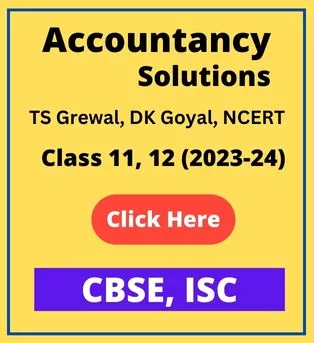[CBSE] Economics syllabus class 11 (2022-23)
Looking for syllabus of Accountancy class 11 CBSE Board for 2022-23 session.
We have summed up the syllabus in detail.
CBSE class 11 Economics syllabus for 2022-23
Theory 80 Marks – Time 3 Hours
Project 20 Marks
| Units | Marks | |
| Part A | Statistics for Economics | |
| Unit 1 Unit 2 | Introduction Collection, Organisation, and Presentation of Data | 13 |
| Unit 3 | Statistical Tools and Interpretation | 27 |
| Total | 40 | |
| Part B | Introductory Microeconomics | |
| Unit 4 | Introduction | 4 |
| Unit 5 | Consumer’s Equilibrium and Demand | 13 |
| Unit 6 | Producer Behaviour and Supply | 13 |
| Unit 7 | Forms of Market and Price Determination under perfect competition with simple applications | 10 |
| Total | 40 | |
| Project Work | 20 | |
| Final Total | 100 |
Part A: Statistics for Economics
In this course, the learners are expected to acquire skills in collection, organisation and presentation of quantitative and qualitative information pertaining to various simple economic aspects systematically.
It also intends to provide some basic statistical tools to analyse, and interpret any economic information and draw appropriate inferences. In this process, the learners are also expected to understand the behaviour of various economic data.
Unit 1: Introduction
What is Economics?
Meaning, scope, functions, and importance of statistics in Economics
Unit 2: Collection, Organisation and Presentation of data
Collection of data – sources of data – primary and secondary; how basic data is
collected with concepts of Sampling; methods of collecting data; some important
sources of secondary data: Census of India and National Sample Survey Organisation.
Organisation of Data: Meaning and types of variables; Frequency Distribution.
Presentation of Data: Tabular Presentation and Diagrammatic Presentation of Data:
(i) Geometric forms (bar diagrams and pie diagrams), (ii) Frequency diagrams
(histogram, polygon, and Ogive) and (iii) Arithmetic line graphs (time series graph)
Unit 3: Statistical Tools and Interpretation
For all the numerical problems and solutions, the appropriate economic interpretation may be attempted.
This means the students need to solve the problems and provide interpretation for the results derived.
Measures of Central Tendency– Arithmetic mean, median, and mode
Measures of Dispersion – absolute dispersion (range, quartile deviation, mean
deviation and standard deviation); relative dispersion (co-efficient of range, co-efficient of quartile-deviation, co-efficient of mean deviation, coefficient of variation)
Correlation – meaning, and properties, scatter diagram; Measures of correlation – Karl Pearson’s method (two variables ungrouped data) Spearman’s rank correlation.
Introduction to Index Numbers – meaning, types – wholesale price index, consumer
price index and index of industrial production uses of index numbers; Inflation and
index numbers.
Part B: Introductory Microeconomics
Unit 4: Introduction
Meaning of microeconomics and macroeconomics; positive and normative economics What is an economy?
Central problems of an economy: what, how, and for whom to produce; concepts of production possibility frontier and opportunity cost.
Unit 5: Consumer’s Equilibrium and Demand
Consumer’s equilibrium – meaning of utility, marginal utility, the law of diminishing marginal utility, conditions of consumer’s equilibrium using marginal utility analysis.
Indifference curve analysis of consumer’s equilibrium – the consumer’s budget (budget set and budget line), preferences of the consumer (indifference curve, indifference map), and conditions of consumer’s equilibrium.
Demand, market demand, determinants of demand, demand schedule, demand curve, and its slope, movement along and shifts in the demand curve; price elasticity of demand – factors affecting price elasticity of demand; measurement of price elasticity of demand – percentage-change method.
Unit 6: Producer Behaviour and Supply
Meaning of Production Function – Short-Run and Long-Run Total Product, Average Product and Marginal Product.
Returns to a Factor: Law of Variable Proportions
Cost: Short run costs – total cost, total fixed cost, total variable cost; average cost;
average fixed cost, average variable cost and marginal cost-meaning and their
relationships.
Revenue – total, average and marginal revenue – meaning and their relationship.
Producer’s equilibrium – meaning and its conditions in terms of marginal revenue –
marginal cost.
Supply, market supply, determinants of supply, supply schedule, supply curve, and its
slope, movements along and shifts in the supply curve, price elasticity of supply;
measurement of price elasticity of supply – percentage-change method.
Unit 7: Forms of Market and Price Determination under Perfect Competition with simple applications.
Perfect competition – Features; Determination of market equilibrium and effects of
shifts in demand and supply.
Other Market Forms – monopoly, monopolistic competition – their meaning and
features.
Simple Applications of Demand and Supply: Price ceiling, price floor.
Part C: Project in Economics
Guidelines as given in class XII curriculum


